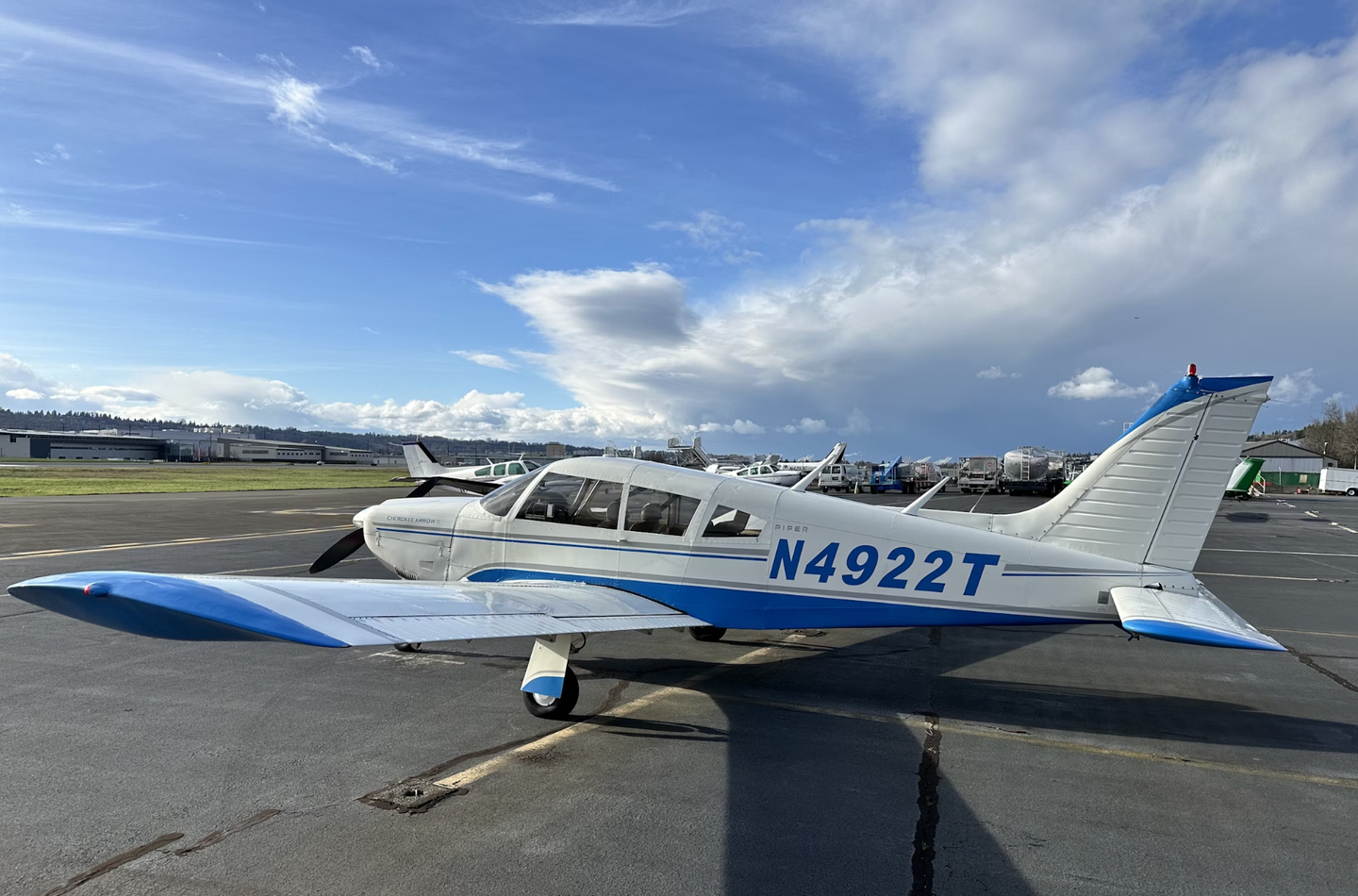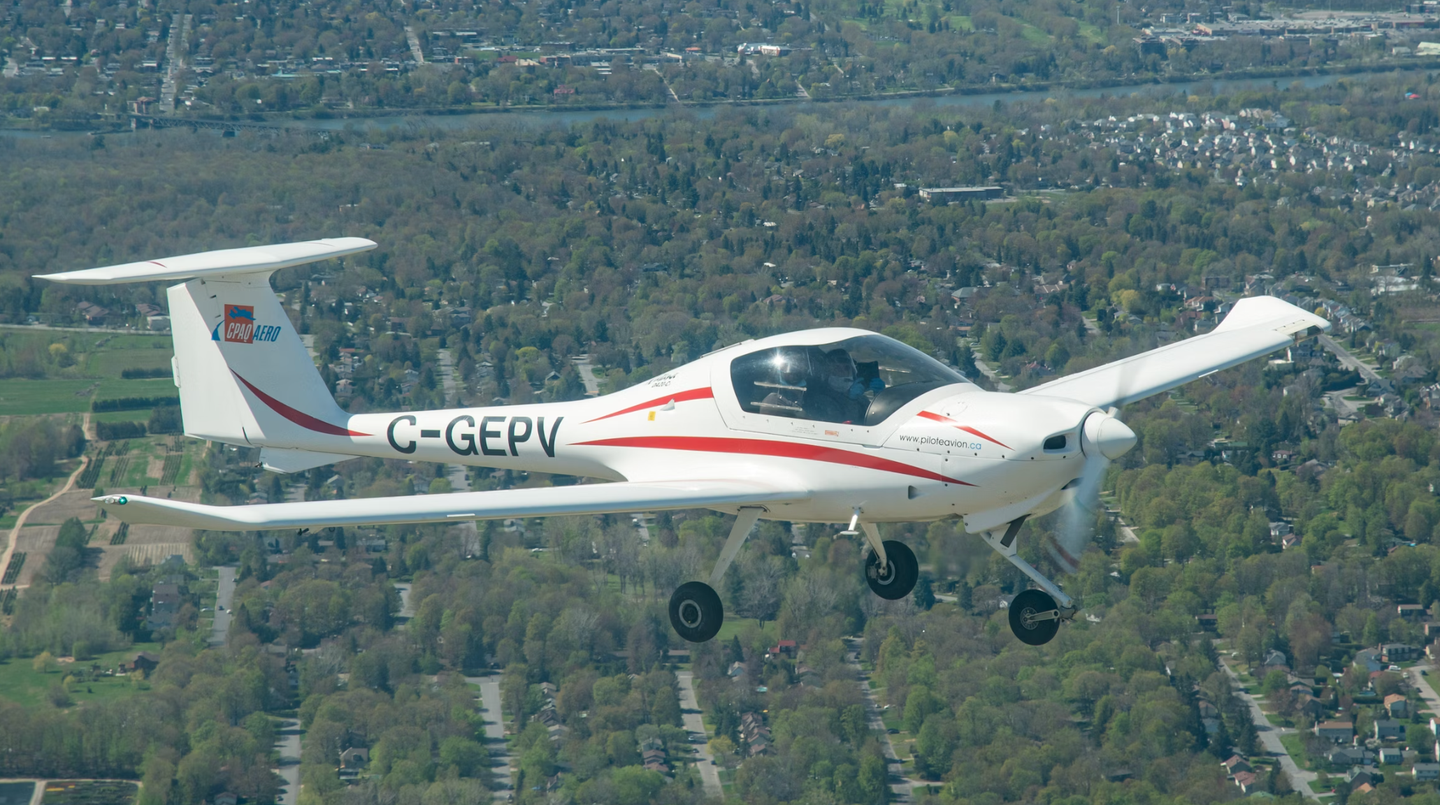Mooney M22 Mustang: The First Pressurized Piston Single
Learn all about the plane that looks like a Mooney on steroids.

The Mooney M22 Mustang was the first pressurized piston single, beating both the Cessna P-210 and Piper Malibu to the party. Photo By Flickr User Chris Givan
There is something magical about the name "Mustang." The beautiful lines and unforgettable Merlin wail of the P-51 or the low V8 rumble of America's iconic Ford Mustang Pony Car evoke images of power and speed. So when the Mooney Aircraft Corporation set about to reinvent itself in the 1960s with the creation of a fast, high-flying, pressurized flagship, the Mooney M22, the Mustang moniker was the obvious choice.
Brothers Al and Art Mooney founded Mooney Aircraft in 1929, an inauspicious year for startup ventures, and abruptly declared bankruptcy a year later. The company lay dormant until 1948, when the Mooney brothers and their partners resurrected Mooney Aircraft in Wichita, Kansas. By the mid-1950s, the brothers had designed and produced the first of the iconic Mooney M20 series. This design, with its all-flying forward-swept tail, tightly cowled engine and unique aerodynamic lines, formed the basis for nearly every Mooney to follow.
However, by the 1960s, the brothers had left the company to work for Lockheed Aircraft. Mooney Aircraft, by then based in Kerrville, Texas, was looking to expand its line of aircraft and produce a truly top-of-the-line transportation machine. Toward that end, the company recruited Ralph Harmon from McDonnell Aircraft. Harmon, an experienced aerospace engineer, had worked on the McDonnell 119/220 and Cessna's never-produced four-engine Cessna 620. His experience with these pressurized high-flyers, coupled with Mooney's excellent basic platform, led to a groundbreaking design. The goal: Produce the first pressurized piston-powered single for the serious traveler.
What emerged was a husky, pressurized, five-seat travel machine that could climb into the flight levels in less than 20 minutes. The fuselage, similar in concept to the Cherokee Six of the same vintage, sported a 6-inch plug down the center to provide a wide and more comfortable environment on long journeys. The tail feathers were widened and strengthened and a dorsal fairing added in front of the vertical stabilizer. The all-metal wing was carried over from the M20 line, and the aircraft's beefed-up landing gear created a more aggressive stance on the ground. This sense of muscularity carried into the instrument panel, which sported a massive landing gear handle and trim wheel that would look right at home in a Boeing 707.
Power was provided by a 310-horsepower Lycoming TIO-541 turbo supercharged engine that enabled a cruise speed of over 220 knots at its service ceiling of 24,000 feet. Cooling this tightly cowled beast appears to have been a priority with no less than six cowl flaps visible, two traditional ones and four additional vents, two on each side of the cowling. Entrance to the Mustang was through a two-piece upward-hinged entry door that featured pressurized door seals and allowed for an 11,000-foot cabin at 24,000 feet. The result is an aircraft that is definitely a Mooney. However, beauty is in the eye of the beholder, and the best that can be said about the Mustang is that it looks like a Mooney on steroids.
First flight took place in 1965, more than a decade before the appearance of Cessna's pressurized P210. The type certificate was granted the following year. Pilots reported that the aircraft was stable, fast and within the capabilities of single-engine pilots stepping up to a larger and faster airframe. Control forces were heavier than the M20 series, not unexpected of a 3,600-pound, 200- knot-class aircraft. Additionally, cabin altitude management, a new experience for most step-up pilots, required careful attention and training. Despite the engineering success, a disconnect appeared between Mooney's production and marketing departments. In fact, the Mustang appeared to be selling for less than the cost to build it! Unfortunately, these kinds of issues plagued Mooney throughout the period and eventually led to its sale to Butler Aviation later in the decade.
However, in 1967, optimism abounded. Mooney had just produced the first pressurized high-flying single and was eager to show it off to the world. The 40th anniversary of Charles Lindbergh's solo flight from New York to Paris provided that opportunity. Thus, on May 23, 1967, pilot and company co-owner Paul Rachael flew the second production Mooney M22 Mustang non-stop from New York to Paris. This flight, exactly 40 years and two days after Lucky Lindy's 1927 arrival in Le Bourget, gained international attention. The Mooney Mustang made Lindbergh's 33.5-hour journey in just 13 hours and 10 minutes! The aircraft, christened the Spirit of Texas, remained on display at the Paris airshow and followed this with a tour of European capitals in hopes of generating international sales.
"The Mustang solved the problems associated with pressurizing a large single-engine piston airplane, but at a significant cost in dollars and complexity. Eventually, only 36 examples of the Mustang were produced, each one likely sold at a loss."
In the end, being first may not have been the best strategy. The Mustang solved the problems associated with pressurizing a large single-engine piston airplane but at a significant cost in dollars and complexity. Eventually, only 36 examples of the Mustang were produced, each one likely sold at a loss. Of the 36 built, a search of the registry shows fewer than half still on the books. A little more sleuthing reveals that three or four are still actively flying today. A recent internet search reveals a beautiful example of the type for sale with only 2,300 hours on the airframe. The pictures accompanying the advertisement illustrate the strength of the pressurized cabin, windows and door structure. And much to the delight of loyal Mooney owners, the cabin is incredibly spacious with room for four to stretch out in air-conditioned and pressurized comfort, all the while winging their way above the weather at over 3 miles per minute.
Mooney aircraft have never been short on engineering excellence or innovation. The company would go on to produce the remarkable 201/231 series and still holds claim to the title of fastest piston single. Who knows; if Mooney had had the luxury of time and money to support the development of the Mustang, this incredible plane might have been as successful as the Cessna P210 or Piper Malibu that followed.

Subscribe to Our Newsletter
Get the latest Plane & Pilot Magazine stories delivered directly to your inbox






